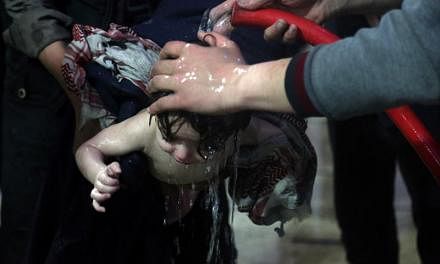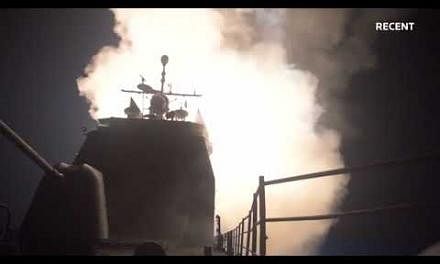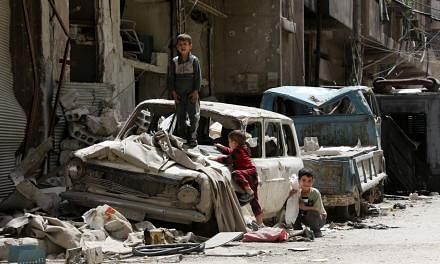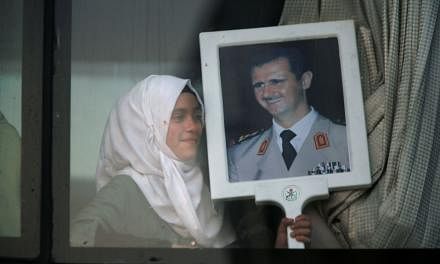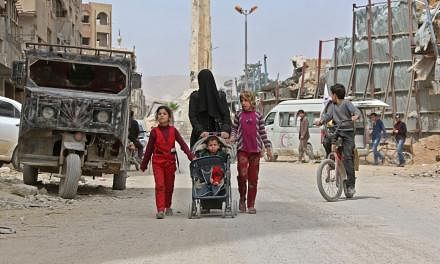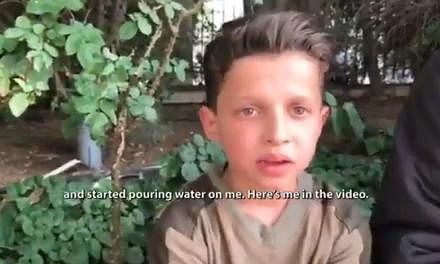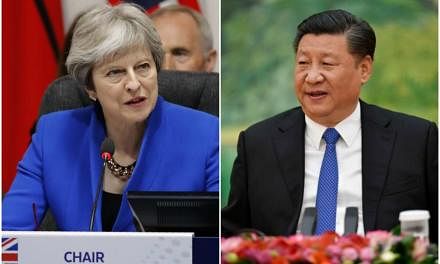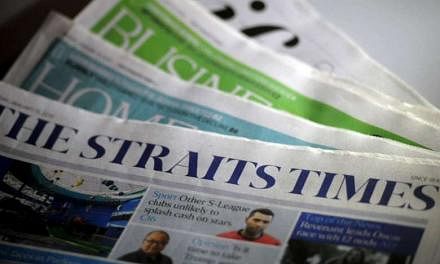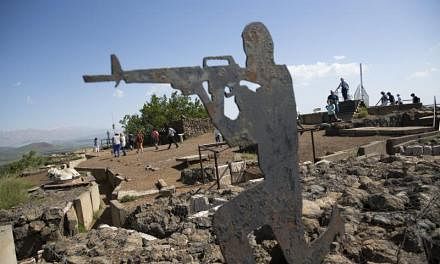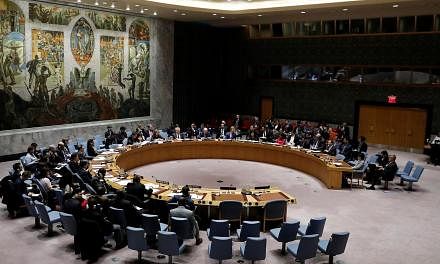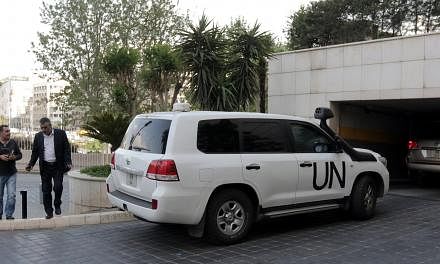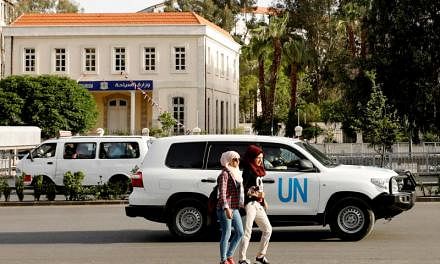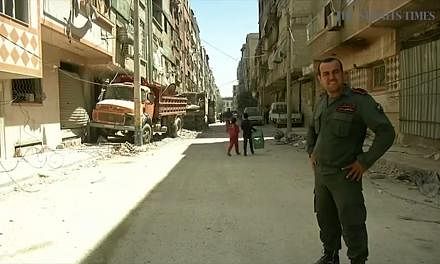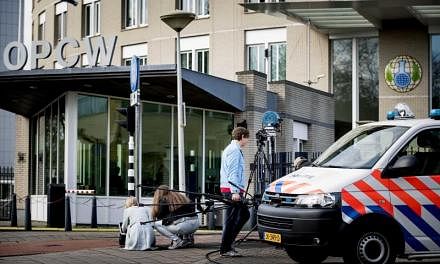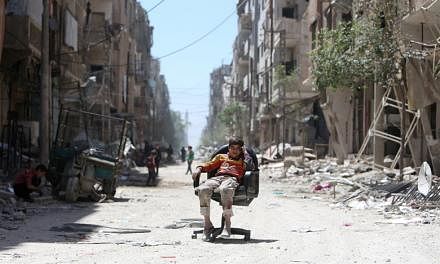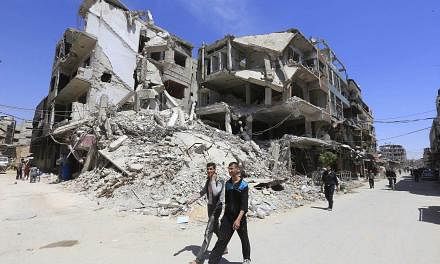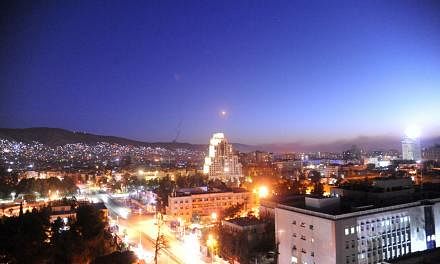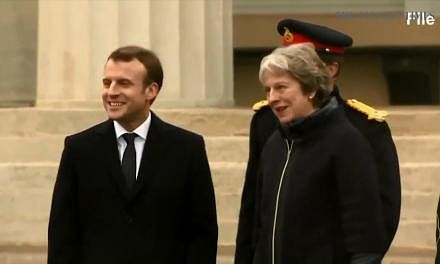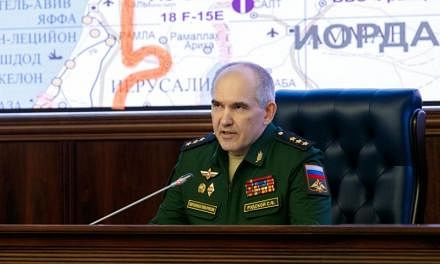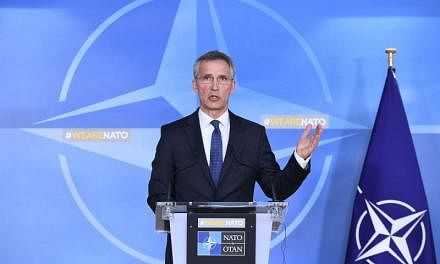WASHINGTON (AFP) - The United States, Britain and France launched strikes against Syrian President Bashar al-Assad's regime in response to an alleged chemical weapons attack after mulling military action for nearly a week. Here's what we know about the strikes:
1. TARGETS
The strikes were aimed at "chemical weapons infrastructure" in what the US billed as a warning against Mr Assad employing such weapons in the future - a warning he has not heeded in the past.
They targeted a scientific research facility in the Damascus area, a chemical weapons storage facility west of the city of Homs and a third location that contained both a command post and a chemical weapons equipment storage facility in the same area, the US military said.
AFP's correspondent in Damascus said several consecutive blasts were heard at 4am, followed by the sound of airplanes overhead. Smoke could be seen rising from the northern and eastern edges of the capital.
British jets struck "a former missile base... where the regime is assessed to keep chemical weapon precursors", the country's Defence Ministry said, while France said the military action was aimed at "the secret chemical arsenal of the Syrian regime".
The Syrian Observatory for Human Rights monitoring group said that "scientific research centres" and "several military bases" were hit in the strikes.
2. ASSETS INVOLVED
US, British and French "naval and air assets" took part in the strikes, which US defence chief James Mattis said employed more than twice the amount of munitions used in American strikes in Syria last year, in which 59 Tomahawk missiles were fired.
Britain's Defence Ministry said that four Tornado jets fired Storm Shadow missiles, while the French Defence Ministry released video footage of Rafale warplanes taking off to carry out the strikes.
France fired cruise missiles from frigates in the Mediterranean and deployed fighter jets from home bases as part of its strikes on Syria, Defence Minister Florence Parly said.
French Mirage and Rafale fighter jets were involved in air strikes on Syria together with four frigate warships, a presidency source said.
This included an air defence frigate, three multi-mission frigates, Mirage 2000 jets, Rafale, AWACS (Airborne Warning and Control System) and support and supply assistance, the source said.
The US reportedly used B-1 bombers in the strikes, but the American military declined to provide specifics.
3. REACTIONS
Syria fired surface-to-air missiles in response to the attacks, but Russia apparently did not, the US said, despite a threat from the country's ambassador to Lebanon that Moscow's forces would do so.
Syrian state news termed the strikes "a flagrant violation of international law" and said the intervention "is doomed to fail".
Russia's Foreign Ministry said the strikes came as Syria - which has been wracked by seven years of civil war - had "a chance of a peaceful future", while Moscow's ambassador to Washington warned of unspecified "consequences".
And opposition American Democratic lawmakers warned that any broader military campaign required authorisation from Congress, as well as a well-formulated strategic vision.
Israel said the attack was "justified", while Iran said it would have regional consequences.

